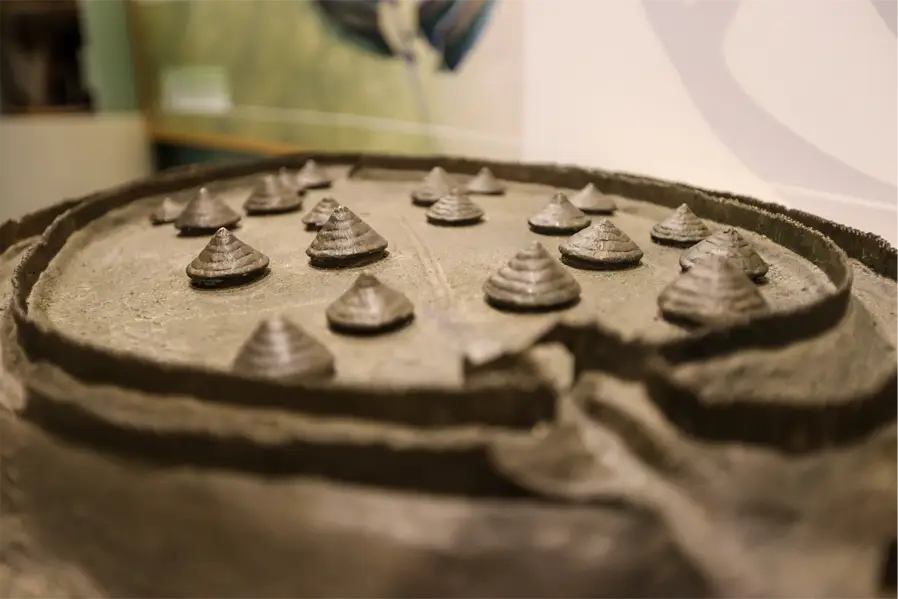Here at Grow Cook Learn, our charity’s goal is to connect people to the rich outdoor world around them. We enable people to experience, discover, learn about and be inspired by the food, history, landscape and wildlife of the Shropshire Hills.
Located in the Shropshire Hills National Landscape, the Discovery Centre and Onny Meadows, run by the charity, already acts as an important touch-point for the many visitors attracted to the area’s great walking, history, wildlife and wealth of local food producers. It also provides a vital green space used by many local people spending that all-important leisure time with friends, family and pets.
The Centre offers a varied education programme, out of school family activities, themed events, a walking festival, and our 30 acres of meadow are managed under a higher-level scheme to protect the special habitat including traditional wildflower meadow, heritage orchard and coppice woodland.
The Outstanding Natural Project aims to build on the Centre’s reputation, delivering four separate but complementary schemes which will delight, inform and inspire visitors and locals alike. It will deliver four schemes altogether: Squelch – a wetland area and bird hide; Hillfort Home – an Iron age cookhouse, fort and play area; Soil’s got Soul – a growing and horticulture project and Wildlife Cafe – a remodelled café focussing on quality local food.
Find the four parts of the project below which are designed to fulfil the following goals:
- To inspire people about the food, history and landscape of the Shropshire Hills
- To encourage people to adopt a happier and healthier lifestyle through exercise, fun, learning and volunteering
- To support sustainable food production, cooking and healthy eating
- To connect people to an enriched wildlife habitat in the riverside meadows
- To create awareness of the environmental challenges faced by us all in the future
- To attract additional visitors and create new jobs
- To ensure the secure and sustainable future of the Centre and generate ongoing social, economic and environmental benefits for the Shropshire Hills into the future
This will be a fantastic journey for Grow Cook Learn and we very much want you to come on board. If you would like to learn about “Outstanding Natural”, please contact the Centre Manager at grant.wilson@growcooklearn.co.uk or 01588 676060

Squelch – Wetland Scrape
Why are we doing it?
No humans live here on the River Onny and its meadows. It’s a special place providing a home to dragonflies, butterflies, otters, bees, grayling, trout, reed warblers, kingfishers, dippers and much more wildlife than we could possibly list here. And that’s not counting all the trees, grasses, wildflowers, mosses, lichens, reeds and weeds!
But we want more, so much more! You – along with schoolchildren, naturalists and others – can see and learn about our wildlife as you watch from the “Otter Hide”, our accessible bird-hide, which is equipped with binoculars and guides to teach you about what you see.
What do we want?
As more of our countryside is turned over to use by and for humans, wetland habitat is becoming increasingly scarce, both globally and here in Shropshire. Squelch makes use of the low-lying wet ground near the river, to create a “scrape”- an area of shallow wetland and mud which will become home to an array of invertebrates and wetland plants which in turn will attract birds such as lapwing, redshank, snipe, curlew and winter waterfowl. Schoolchildren, wildlife enthusiasts, clubs and the general public will all benefit from the opportunity to see wildlife close-up and accessible paths will mean the site is available to all. The project links in with flood alleviation projects such as “slow the flow” and the leaky dams project in the Corvedale, protecting flood-prone settlements downriver.
Our Soil’s Got Soul
Why are we doing it?
Soil. Dirty stuff that sprouts weeds, muddies your shoes and takes up space that could be concreted over to park your car? Or the precious living layer between us and bedrock, whose organisms generate every single fruit, vegetable, bread, biscuit, baked bean, cereal, oil and sugar that keep you alive every day – and every single foodstuff that feeds the cows, pigs, poultry and sheep that most of us also live off?
We not only love our fertile alluvial soil here in the Onny Meadows, we look after it. Preserving its health for future generations and growing and harvesting its produce for your delight in our cafe and shop.
Come down to Our soil’s got soul in our Meadows – we’d like to show you how we look after and learn from our soil, and how we’re addressing some of the challenges the soil of the Shropshire Hills and beyond faces from years of over-grazing and over-use of artificial fertilisers and pesticides.
What do we want?
This project looks at regenerative horticulture, using soil as a carbon-sink and producing food in a way that enhances rather than damages the environment. In one sector, there are three long polytunnels and through the doors at the end you can glimpse tomatoes and aubergines…. In another, there is a series raised beds with chunky wooden edges. They have a varied mix of tall and short crops growing, some finished, some just coming. This is the organic potager garden, with produce destined for market. The next segment has traditional low vegetable beds strewn with straw and mulch – it’s a no-dig regime. The final segment looks more agricultural with straight rows of crops – potatoes, lettuce and carrots. This is the core of the community veg box scheme.
There is a packing shed, where the veg boxes are prepared, and the field kitchen hosts regular BBQ evenings with the food picked direct from the gardens and diners encouraged to forage for their herbs etc. Raised beds house a variety of vegetables supplying our café and shop and a community orchard has pick your own apples, pears and plums. The project inspires our visitors, providing volunteering opportunities and help to those in need through social prescription.
Wildlife Café and Kitchen
Why are we doing it?
Whinberries, crab apples, wild garlic, elderflowers, blackberries, Shropshire prunes and wild cherries all grow hereabouts. The sheep on the uplands and the pigs and cows from the valley pastures all form part of the food story and the taste of the region. This story is brought to life in our new cafe, and a menu featuring fidget pies, mammoth steaks, lamb stew, whinberry tarts, foraged fruit and home-grown vegetables reflects the seasons and the landscape.
In our new cafe, we tell the story of food: how the landscape is shaped by what is grown and reared in the area, how what you eat at the Discovery Centre helps to support the rural economy and how “going local” and reducing food miles creates a low-carbon future. Soil’s got soul links closely with the café, meaning fresh produce is always available to eat.
What do we want?
This project features a stylish and functional new café area, a “boots ‘n’ paws” bar, fab coffee, a serving hatch and covered outdoor area to connect the meadows to the building. Healthy children’s options and inclusive menus, catering for vegans and those with differing cultural dietary needs mean that the demographic make up of our visitors resembles that of the surrounding area. We offer training, apprenticeships and volunteering and jobs, helping to develop the chefs of the future and supporting the growing food tourism sector.
The project also involves an upgrade to our kitchens and supports our green energy policy by converting to efficient convection ovens and ultra-low energy induction hobs.
Hillfort Home
Why are we doing it?
There are more than 50 “empty” Iron-Age hillforts dotted around the local area, including the one on Norton Camp, the hill which looms over you. Visitors can only imagine what life inside must have been like, but Hillfort Home brings them back to life- a cookhouse with a thatched roof, mud walls and a dark entrance; the ramparts, topped with wooden palisades; the ditch, broken by a grand entranceway flanked by totem poles. Here there are demonstrations of Iron-Age cooking, tool making, sewing and weaving. What did Iron-Age people eat? What did they wear? Where did they sleep? What tools did they use? You can find out at Hillfort Home where you can see, hear, smell, touch and taste history.
What do we want?
A vibrant visitor attraction telling the story of the Iron-Age and bringing the past to life. Linking to our Shropshire Hills Through Time exhibition, visitors can learn about Iron-Age life via the iBeacon trail and there are demonstrations and events depicting the life of Iron-Age folk. The palisaded ramparts are built in real size to show the scale of ditches, but the cookhouse is the centrepiece of the attraction, teaching people about how food was prepared, stored, cooked and eaten. There are demonstration days and school parties use the facility as part of the school curriculum.
There is an associated natural play area bringing a whole new level of fun to the Onny Meadows, with a barefoot trail, slides, swings and balance beams. The project fills the meadows with a range of interactive and educational experiences for visitors young and old.
